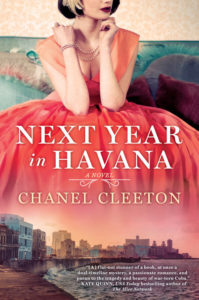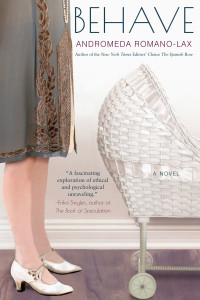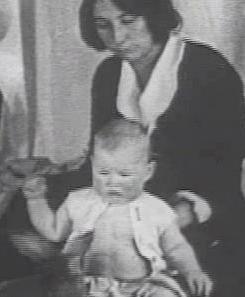 Cuban profiles in courage, sacrifice, and hope (Havana, alternating between 1958-1959 and 2017): Next Year in Havana is a novel consumed with politics, romance, and familial devotion. Love of country and family is pitted against impassioned love in a country with a long history of loss of freedoms. It arrives at a time when Americans love for country – standing up for democracy – is sorely being tested. The novel humanizes brave men risking their lives for their homeland and the strong women who fell in love with them at great peril and sacrifice. “To be a woman in Cuba is to suffer.”
Cuban profiles in courage, sacrifice, and hope (Havana, alternating between 1958-1959 and 2017): Next Year in Havana is a novel consumed with politics, romance, and familial devotion. Love of country and family is pitted against impassioned love in a country with a long history of loss of freedoms. It arrives at a time when Americans love for country – standing up for democracy – is sorely being tested. The novel humanizes brave men risking their lives for their homeland and the strong women who fell in love with them at great peril and sacrifice. “To be a woman in Cuba is to suffer.”
“No one warned me love would hurt so much,” says nineteen-year-old Elisa Perez, voice of Cuba’s complicated political past. Yet the “only thing worth trusting” is love, concludes her granddaughter Marisol, the other female narrator, hers the voice of Cuba’s complicated political present. Past and present, “the story of Cuba is struggles and strife.”
A sentiment echoed by President Obama when he announced the re-opening of American relations with Cuba after fifty years: “I’m under no illusion about the continued barriers to freedom that remain for ordinary Cubans.”
Those fifty-some years span American-Cuban author Chanel Cleeton’s stirring, partly biographical novel opening the year Fulgencio Batista’s dictatorship was collapsing and Fidel Castro’s taking over.
Against the backdrop of Americans now traveling to Cuba, concerns about Trump rolling back historic progress, and the hot-button issue of immigration looming before us, could there be a more importune time for Next Year in Havana? The reason it caught my attention.
The author’s father and grandparents escaped communist Cuba in 1967. They, like Elisa’s fictional family, hoped to return to the country they loved, believing Castro would be toppled. Hope, ojalá, is also Cuba’s story. Of course that didn’t happen, so they forged a good life in Southern Florida like so many exiles did, keeping their culture, ancestry, and stories alive – the inspiration for this passionate novel pulsating with urgency and tension.
Elisa’s and Marisol’s heart-grabbing stories are mostly set in Havana, ”a beautiful city shrouded in sadness.” Likewise, the novel calls out to us in beautiful, evocative, soul-searching prose.
“We are silk and lace, and beneath them we are steel,” says Elisa, one of four sisters dubbed the “sugar queens,” referring to her family’s sugar empire – the industry Cuba’s economy was built on. When Fidel assumed power the family was in great jeopardy as their wealth was the antithesis of Communist doctrine. “For better, worse, or the truly horrific, sugar has molded Cuba’s fortunes.”
“Cuban society is not a quiet society,” and this is not a quiet novel. It’s a novel of heart and heartache. Cleeton tells us “this book holds a piece of my heart.” Which is why it revolves around Elisa’s and Marisol’s stories. Cleeton was very attached to her Cuban grandmother; Cleeton, I think, imagines some of herself in Marisol.
When we meet Elisa, she’s a demure high-society young women, respectful of her family’s position in Cuban society yet restless in her cloistered world. Her father Emilio is well-connected in politics having been instrumental in drafting Batista’s 1940 Constitution, which was supposed to bring democracy to the island. The fact that he’s well-known and well-watched by the new dictator poses even more danger when Elisa unexpectedly falls deeply in love with an intense older man, Pablo, who turns out to be a revolutionary, an associate of Che Guevara.
Danger is the tone of the novel, opening with the Perez family fleeing the country. Then we learn Elisa was essentially the mother who raised Marisol. The rest is told in backstories opening with Marisol’s chapter telling us Elisa has died and bequeathed Marisol to scatter her ashes in Cuba, much like the author’s grandmother asked her family to do. They’ve yet to do so, revealed in a Dear Reader letter. In Marisol’s opening chapter we learn why: burying an exile in Cuba is not an easy proposition. Thus, we meet thirty-ish Marisol also taking risks starting with the smuggling of her grandmother’s ashes into Cuba, a “mythical entity” up until now – the plot that drives the novel.
Traveling on a journalist’s visa (Marisol writes for a travel magazine), she’s met by captivating Luis Rodriquez, son of Elisa’s best friend, Ana. From the moment he picked her up in one of Cuba’s splendidly maintained vintage cars, a source of enormous pride, sexual tension permeates and does not wane.
Next Year in Havana is Cleeton’s marvelous coming-out in the historical fiction genre, having penned a series of contemporary romances, ten novels in all. (A delicious, seductive line: “I have a feeling there will never be enough moments with you,” Luis tells Marisol.) The novel also draws on the author’s degrees in global politics, international relations, and law, which, without giving away spoilers, surely help to tell tales of intolerable injustices with authenticity.
In the character of Luis Rodriguez, Cleeton has created a clever vehicle for the natural rolling out of the details of Cuba’s political history. He’s a history professor at the University of Havana (which Castro later closed for fear of spreading student activism). Also close to his grandmother, Ana, Luis graciously agrees to be Marisol’s tour guide, setting in motion a relationship that in many ways parallels her grandmother’s.
Ana and her family stayed behind in Cuba, raising thoughtful, deeply emotional questions about how Cubans feel towards those who left and those who stayed.
The two friends lived next door to each other in an exclusive neighborhood by the sea, Miramar, isolated from the oppression ordinary Cubans endured every day. (You can almost feel their hunger through an austere food rationing program. “Cubans do lines better than anyone.”) The Perez sisters maintained the lifestyles of socialites. “My mother has no time for revolutions; they wreak havoc with her balls and teas,” says Elisa, until the revolution comes to her doorstep.
What tourists see, hear, and taste – glamorous and romanticized – is dramatically different than the rest of Havana. The music video below featuring one of the “musical icons” Elisa and Marisol were raised on – the Buena Vista Social Club – gives you a sense of that colorful flavor and scenery.
The novel is filled with Cuban politics. “No one can afford the luxury of not being political in Cuba.” “How can you dismiss something [politics] that is so fundamental to the integrity of who we are as a people, as a country?” Luis asks Marisol. He’s a serious, intense man, like Pablo.
The romantic tensions in Elisa’s and Marisol’s alternating stories build and converge – one under the Batista/Fidel regime, the other under today’s Communist dictator, Raul Castro, Fidel’s brother.
“I know a thing about Cuban pride,” Marisol declares ambivalently because the Cuba she finds is not as beautiful as the stories Elisa nourished her on. “I didn’t realize how much people still suffered.” In spite of it all, Cubans are pictured as people who adapt and “make their own fun.”
It’s that Cuban spirit, “passion, honor, and conviction,” that drew Elisa to Pablo, Marisol to Luis. They (and others) carry messages of courage, sacrifice, and hope.
Lorraine


